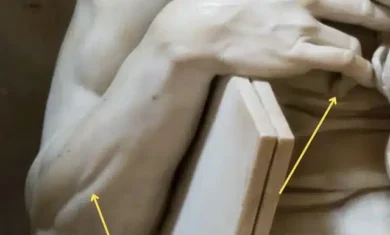As I’ve been digging more into the Tana note-taking app and talking to people about the pros and cons of it, a common dividing line seems to be coming up; is the app focused on outline-style notes, or plain text?
I never really thought it mattered to me (and I didn’t even really see the distinction), but I’m coming around and I think I’m falling on the outline type system as my favorite.
Plain text
Most of us began taking notes on text-based systems. This could go way back to simple note-taking apps from decades ago, but even more recent apps like Evernote (and even Obsidian) are text-based at their core. This simply means that you can put blocks of text into the app and format it however you’d like. You can optionally add bulleted lists, but they’re not required.
Outlines
More recent apps, such as Roam Research and Tana, are built around an outline. Everything is a bullet, and a sub-bullet, and a sub-bullet. This keeps you a bit more locked in on how you can work, but also generally makes it much faster to lay out idea, collapse older sections, and build things out more quickly.
Even inside of outline-based systems, things are often handled differently. In Roam, you create pages and build outlines on those, and things are a bit ephemeral. You don’t really know where they live, but that’s ok in their system. In Tana, every single bullet is a “node”, which is essentially a note. You don’t need to specify “this is a new note”; if it’s a bullet, it’s a note that you can reference from elsewhere later. It’s taken me a while to get my head around it, but it works very well.
The problem with outline-based systems is that they’re not great for long-form writing. Writing a long article where everything is a bullet is kind of weird. That works ok for me, since I use my notes for notes about my blog posts, but I do the full writing inside of WordPress. For others, though, that’s a more substantial problem and they’re better off with a system like Obsidian.
Which is better?
The answer, of course, is that it depends. My idea with this post is merely to point out the two different structures, so that you can be aware of them as you’re looking for the next great note-taking tool for yourself. As you explore them, you’ll likely lean more toward text or outlines, and that can help shape your decision.
Do you have a style that you prefer?





Interesting. I never really thought about it, but for personal use I leverage Evernote and Keep. And I find that I don’t use them a ton. At work, I use OneNote but I use bulleted templates and use it all the time.
Maybe I should give one of the others a shot for personal use to see if that creates more value for me.
I still plan to continue to use Keep for quick notes, as it’s so simple.
You raise an interesting point, though, with separate systems for home and work. That’s fairly common, but I guess it depends on your goals. For me, the line is so blurry that it’d be nearly impossible and I find great value in blending them, but there are good cases to keep them apart too.
Have you looked at logseq (pr. Log Seek)? It’s an open source outline based note taker. From what I’ve heard, it’s maybe more akin to Roam, but many people use Obsidian and Logseq together (since they’re both hosted locally, you can host your Logseq files within your Obsidian vault directory) allowing you to edit Logseq notes in both applications.
Logseq also has complex data-queries that enable you to display nodes in tabular format when that’s useful. Like Obsidian, it has a growing repository of community plugins and themes. And, like Obsidian, it’s core functionality is actively improving.
I’ve no vested interest, but you may like it. https://logseq.com/.
Like you, I’ve tried various tools, including Obsidian, Logseq, and Mem, and Tana. I’m a sucker for a shiny object, but I’m trying to keep my eye on the prize: greater productivity and less chaos. Tana has many things to commend it. Just not sure I want to bounce over there only to bounce back yet again. I’m currently back on the Obsidian train after a solid go with Logseq. (Though I noticed Logseq has some great advancements that make me consider trying it again. Sigh.)
Logseq is indeed quite impressive. I’ve played with a bit, but never have really used it as a day-to-day. To me, it feels more like Roam, but that’s certainly not a bad thing.
I’m very happy with Obsidian right now, but we’ll see where things end up in the coming years.